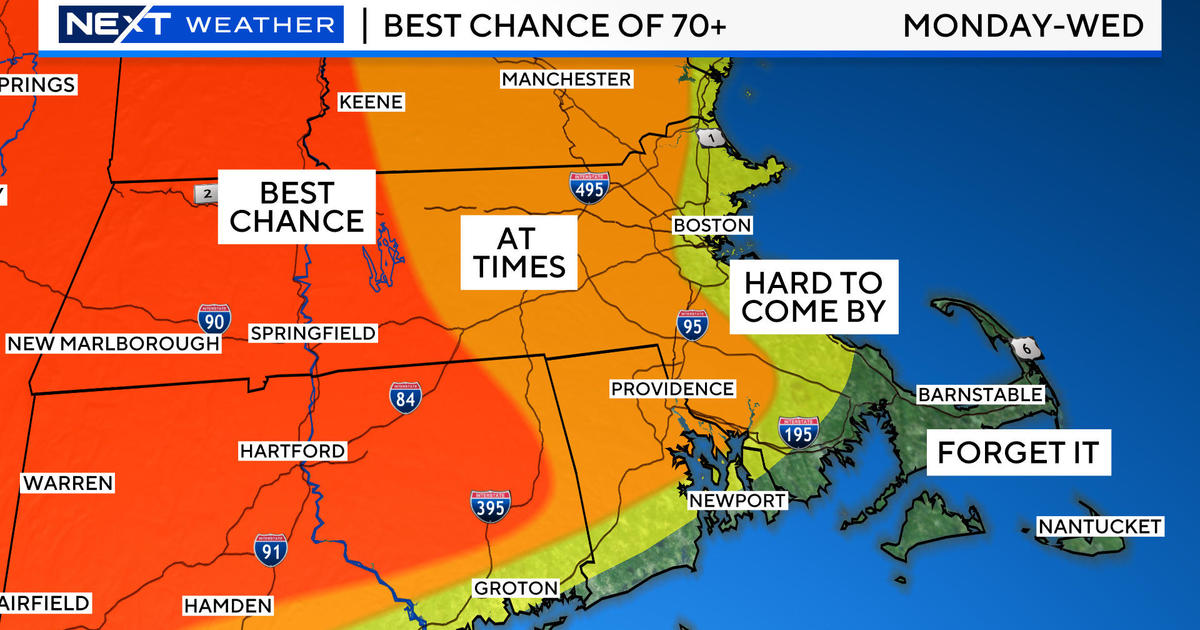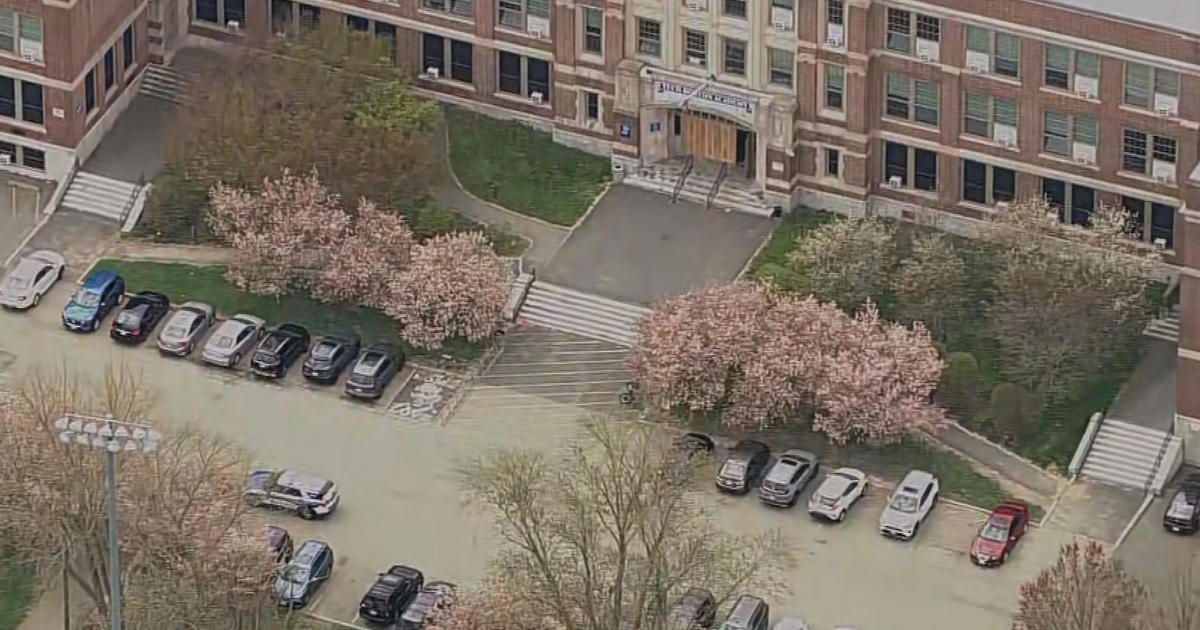Gardening With Gutner: Fall Gardening
BOSTON (CBS) - Summer vacations are over and the kids are heading back to school.
This should allow for some time to get back into the garden for one last planting of fall blooming flowers before old man winter sets in.
Watch Gardening with Gutner:
With a good two-and-a-half months left in the growing season there is still time to make your garden grow.
September is a great time to remove some tired and sad looking annuals and replace them with cooler temperature loving flowers that will bloom until early November.
Fall is also a great time to re-seed your lawn, move or transplant a tree or shrub, and soon, plant you spring blooming bulbs.
The list of choices for fall flowers is long but here is a list of my favorite fall blooming annuals and perennials that I know your favorite garden center should have in stock now!
Annuals for the Fall:
There are so many wonderful additions to the traditional plantings of Mums for the fall months. Here is a list of some of my favorites. Remember you can also plant a fall crop of cold crop vegetables too!
- Hardy Chrysanthemums
- Pansies and Violas
- Hardy Asters
- Ornamental Cabbage and Kale
- Rudbeckia (annual variety)
- Snapdragons
- Dianthus (annual variety)
- Bacopa
- Calibrachoa (million bells)
- Calendula
- Lobelia
- Victoria Blue Salvia
- Pennisetum Rubrum (ornamental grass)
- Ornamental Peppers
- Cold Crop Veggies: Lettuce, Broccoli, Cabbage, Cauliflower, Kale, Peas and more
Perennials for the Fall:
1. Asters: In shades of pink, purple, blue and white, these delicate daisy-like blossoms start popping open in late August and continue on until frost. Pinching in the early summer turns these Asters into mounds with dozens of flower buds.
Asters will tend to creep throughout your garden, but their airiness allows them to blend particularly well with other flowers. USDA Hardiness Zones 4 - 9
2. Anemone: There are over 120 species of Anemones and the fall bloomers (Japanese Anemone's) are stunning and are some beautiful varieties that bloom in the fall. September Charm, Honorine Jobert and several others offer beautiful flowers in the fall. One of my favorites!
3. Caryopteris: (Blue Mist Shrub): Caryopteris is a sub-shrub that is often grown in the perennial garden. Caryopteris slowly blossoms in August with dazzling blue flower clusters. Just try and keep the butterflies and bees away. Caryopteris is cut back in early spring, like a Buddleia, and the gray-green foliage is attractive all season. USDA Hardiness Zones 5 - 9
4. Chelone: (Turtlehead): Nick-named for their blossoms shaped like turtles heads, Chelone is a carefree fall blooming perennial whose only real dislike is excessive dry heat. Chelone behaves itself, growing in a dense clump with attractive foliage and red, pink or white blooms. USDA Hardiness Zones 2 - 9
5. Eupatorium: (Joe Pye Weed): Joe Pye is one of those native plants we take for granted because we see it by the side of the road, but it makes a wonderful backdrop to a garden border. The newer Eupatoriums have been bred shorter and less weedy but the dense mop heads of mauve flowers still blend in beautifully in the fall garden. USDA Hardiness Zones 2-9
6. Helenium: (Sneezeweed): Helenium is making a resurgence in gardens. They look like small russet-toned coneflowers, in reds, yellows and oranges. Many helenium can grow quite tall and will need to be staked or pinched. Like clematis, they like cool feet and hot heads. Helenium is also a good choice for poorly drained areas. USDA Hardiness Zones 3-9
7. Helianthus: (Perennials Sunflower): Helianthus is a good natured, jolly plant, branching and flopping on its neighbors. The brilliant gold fluffy daisy-like flowers make an instant focal point and attract butterflies and birds. Helianthus tend to be sterile and can be reproduced by division. USDA Hardiness Zones 3 - 9
8. Heliopsis: (False Sunflower): Heliopsis is very similar to Helianthus. Heliopsis tends to begin blooming earlier in the season and stays on for 8 or more weeks. Newer varieties have been bred smaller and sturdier, for less flopping. USDA Hardiness Zones 3-9
9. Sedum: (Stonecrop): Sedum 'Autumn Joy' comes as close to perfection as any plant can. It looks good all year, requires minimal attention and attracts few problems. It's only drawback is that it is not deer resistant. 'Autumn Joy' has been joined in the garden by a growing number of fall wonders like: 'Bertram Anderson, 'Brilliant' and 'Matrona'. No fall garden is complete without sedum. USDA Hardiness Zones 3 - 9
10. Solidago: (Goldenrod): Goldenrod is finally getting the respect it deserves, especially with introductions like 'Fireworks' and 'Golden Fleece'. Unlike the native solidagos that spread everywhere and never stood up on their own, these newer varieties are sturdy and chock full of fall blooms. USDA Hardiness Zones 3 - 9
Blossom End Rot on Tomatoes
Blossom End Rot is commonly caused by a calcium deficiency in the soil around your plants. This problem is also caused by improper moisture levels in the garden that regulate the delivery of nutrients and the amount of calcium available in the soil. Tomato rot will be more noticeable after periods of uneven precipitation such as when drought conditions are followed by periods of heavy rain.
To help reduce this you can do the following:
- Add Lime and/or Bone Meal to the soil area around your Tomatoes.
- You can also use a product called "Rot Stop" This will help apply Calcium directly to the fruit and foliage and will help prevent this from happening on later fruits.
If you have any questions or comments you can email me at Mark@PembertonFarms.com



